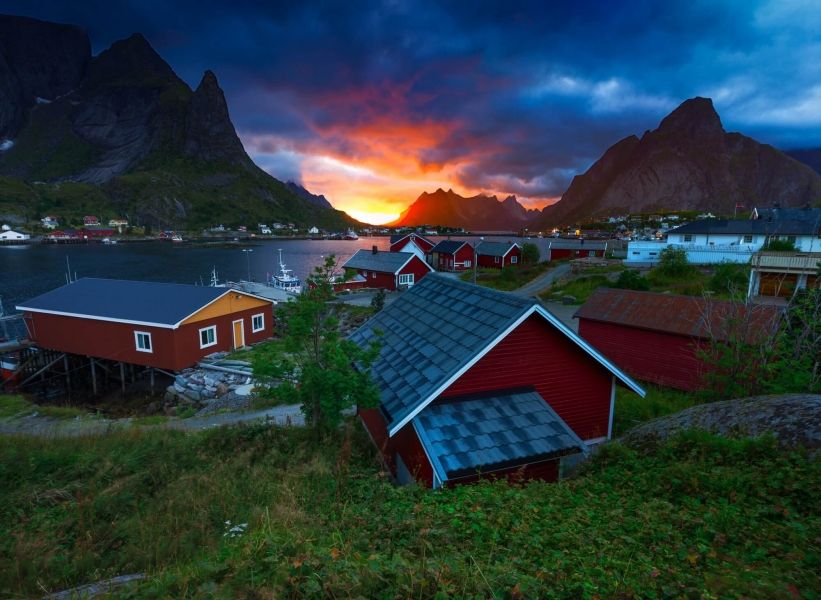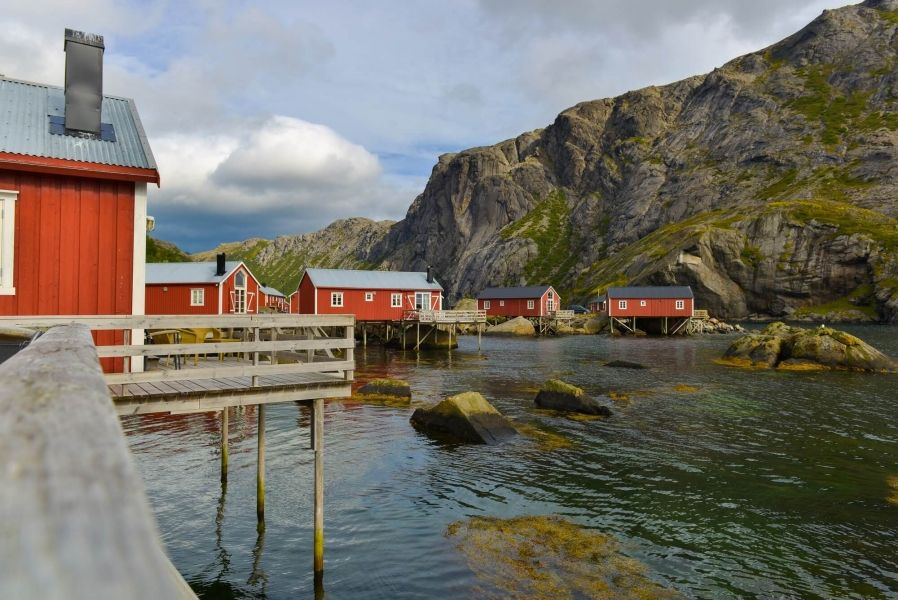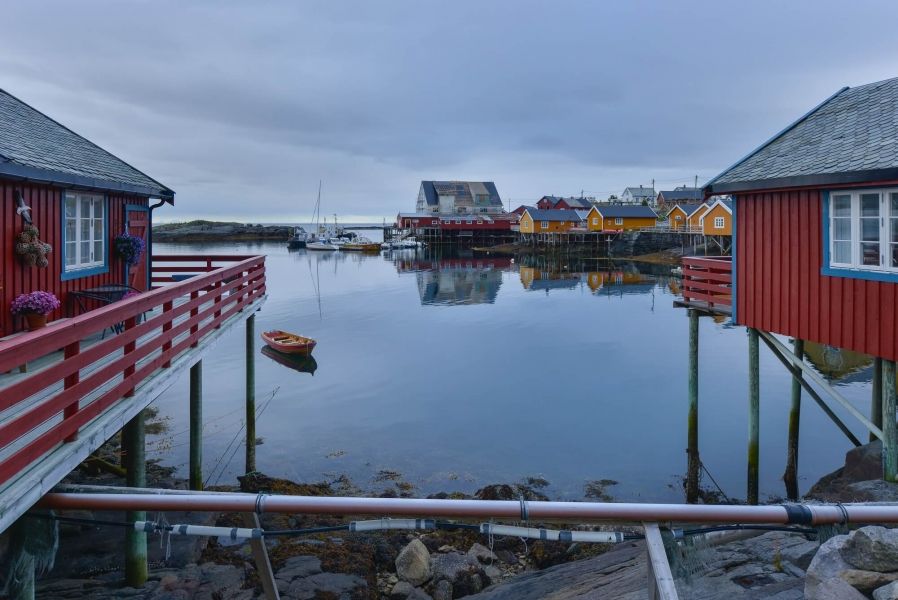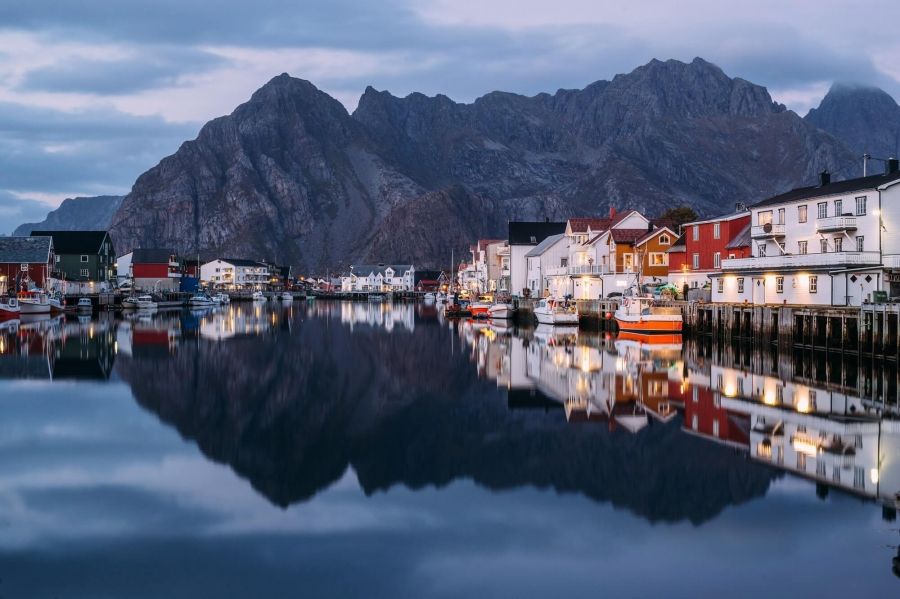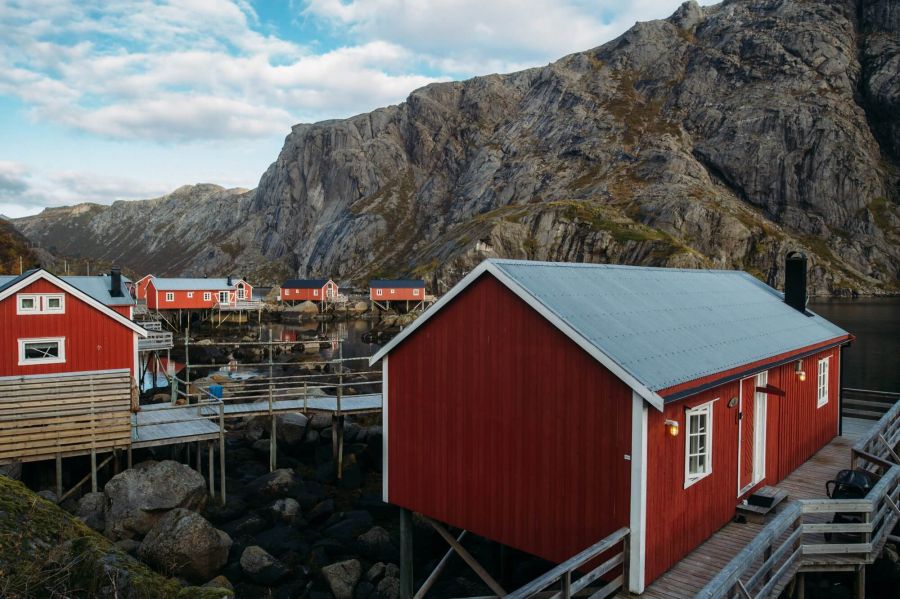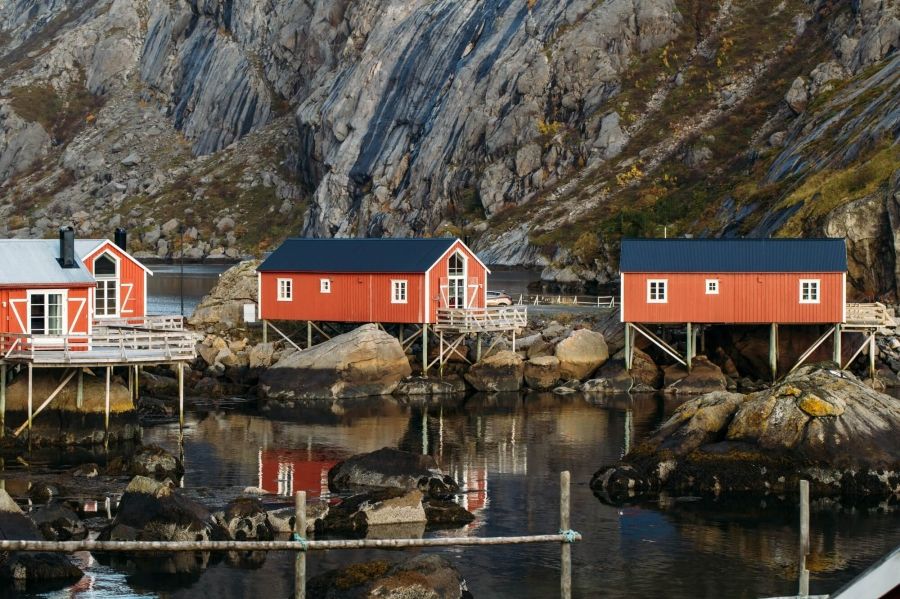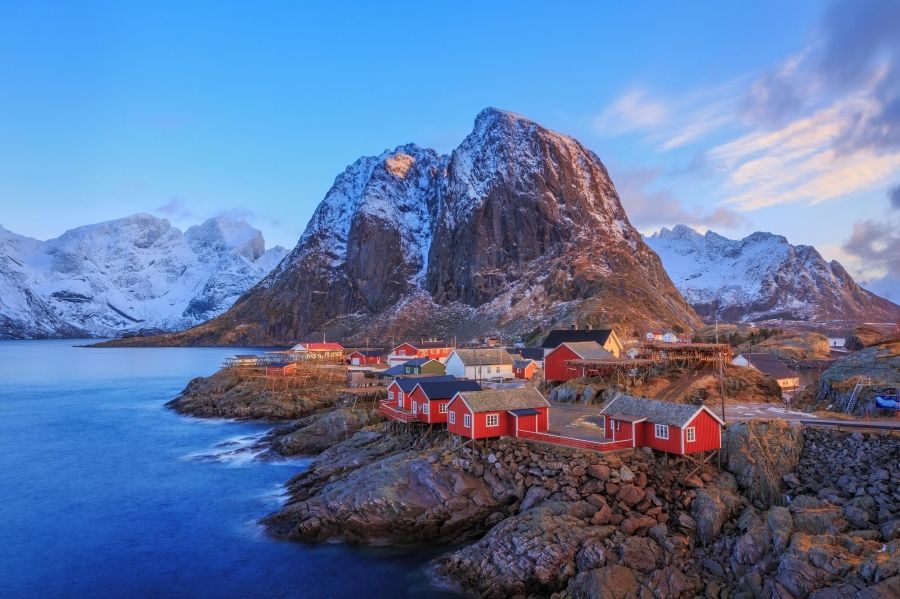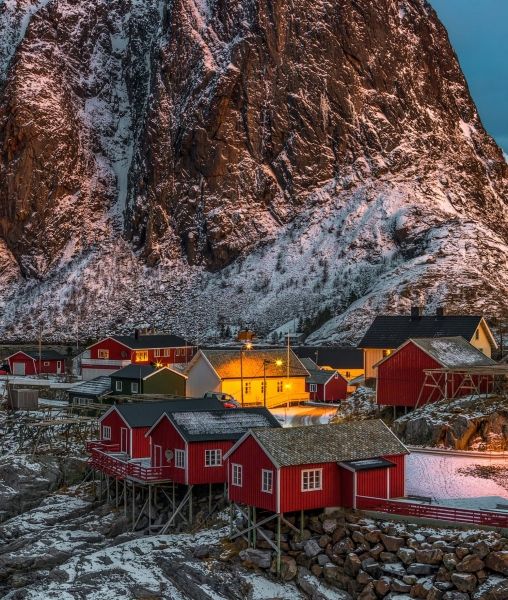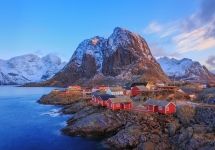Not only the Falun red - facade colours of Scandinavian houses and their significance
The colours of traditional Norwegian houses depended on the material situation of the owner, his profession and his place of residence.
Standardly built from longitudinal planks and with characteristic roofs (steep to facilitate snow sliding), Norwegian houses are mostly different in colour. Every house means something else. What exactly?
Red house
Normally it belonged to fishermen, as red paint was the cheapest. Initially, it was made from fish blood and fat or other animals found in the areas, but not only. Often, the pigment came from the (closed) copper mine in Falun, Sweden - hence the characteristic claret, or - as others say - the brick shade currently called the Falun red. The first mention about the paint dates back to the 16th century, exactly in 1573. In spite of the passage of time, it has reminded popular to this day, also due to the properties of impregnating wood.
The red paint was also to imitate from the distance the great Gothic cathedrals and indicate the wealth of the owner - according to some sources, whereas the other emphasise that this colours was a proof of paid taxes.
Yellow and orange house
This was primarily inhabited by craftsmen, wealthier merchants and smaller bourgeoisie. They could afford to acquire more expensive paints, which came from ochre and cod liver oil. Over time, it was purchased by peerage descendants; mainly during the time when red was ubiquitous. It was one of the ways to be distinguished again.
White house
Its owner was affluent, Scandinavian inhabitants used to think this way. All because the white paint was one of the most expensive - to obtain it, it was necessary to add zinc white. Often, however, others took advantage of it, but they only painted the front wall in white and the others in red.
Brick houses in Norway were not built until the 1970s. By then, almost only wooden houses were erected, which were meant to be “koselig”, i.e. cosy, full of light and warmth. Recently, they have become popular again. They are often combined in a way to form a long coastal line (keeping in mind that the buildings feature similar style and colour, the design itself prior to erection commencement must be accepted by the neighbours). They have even got a name - in the Lofoten area they are called “rorbuer”.
